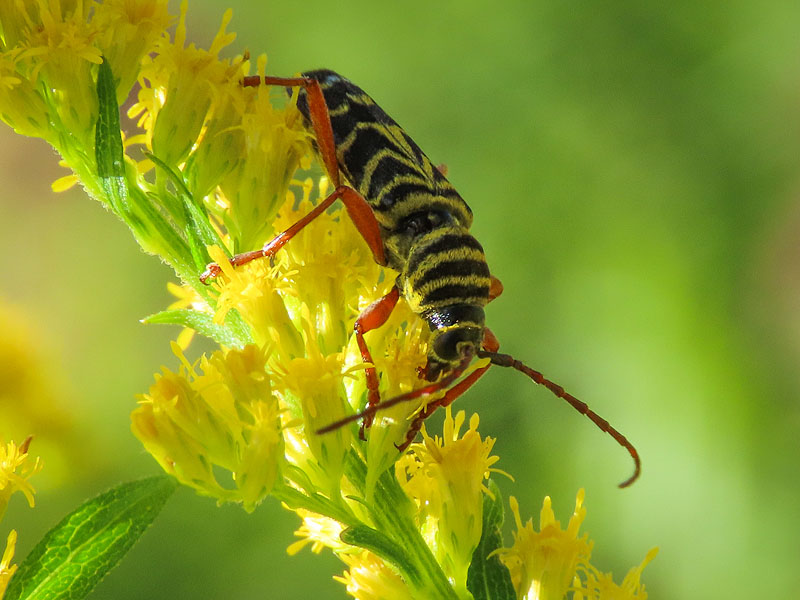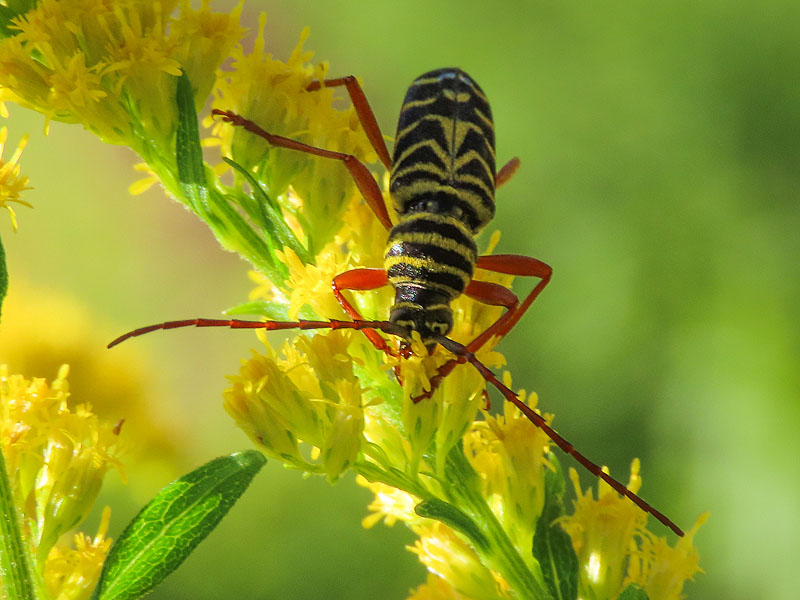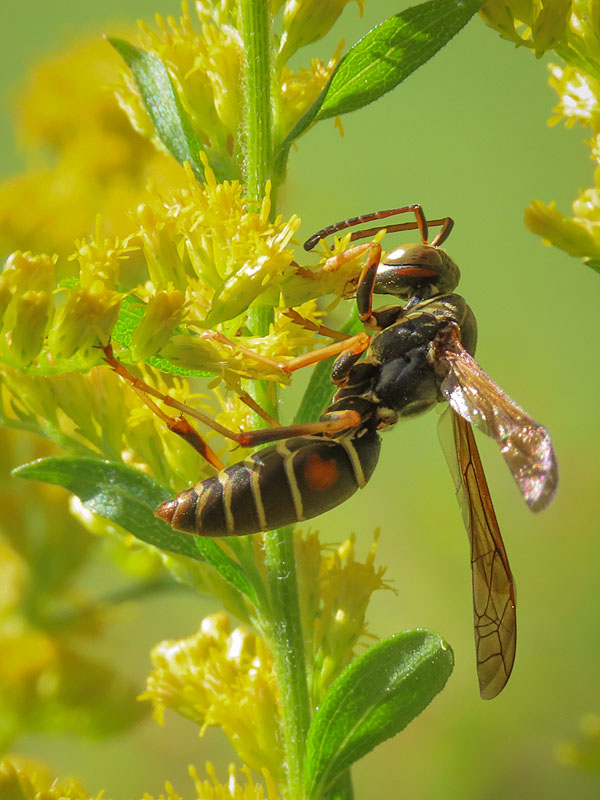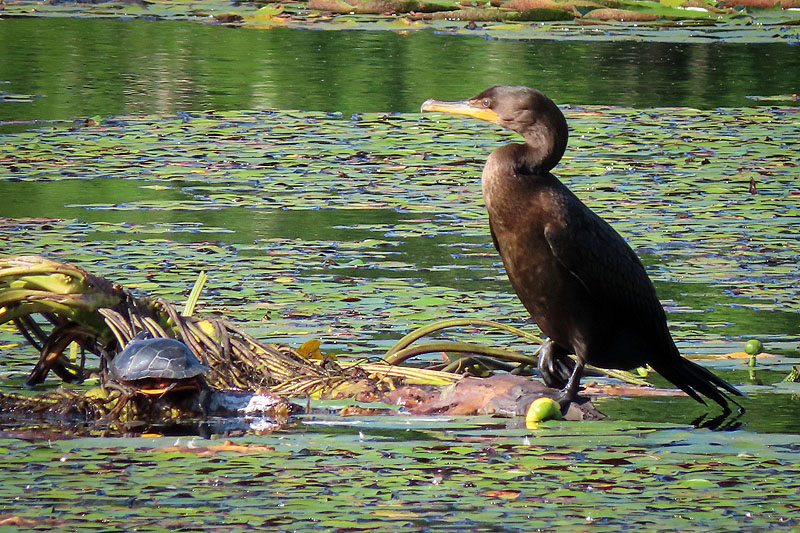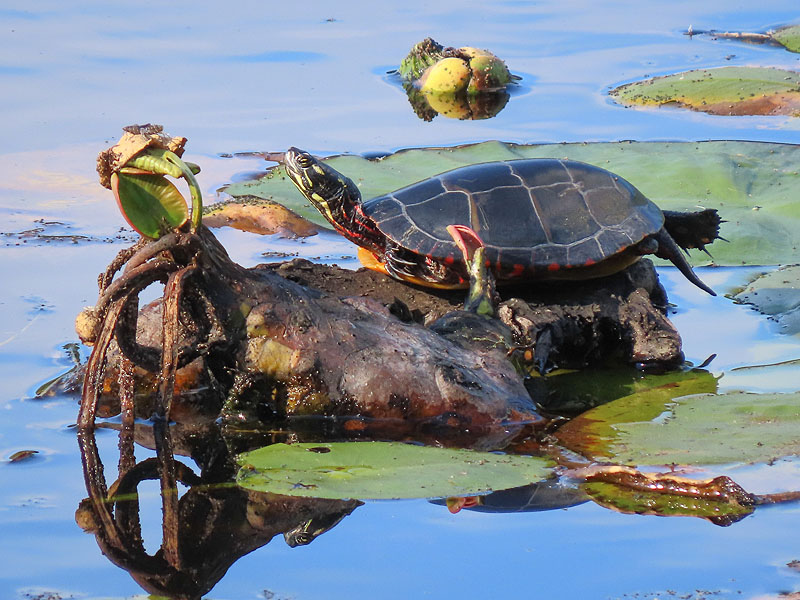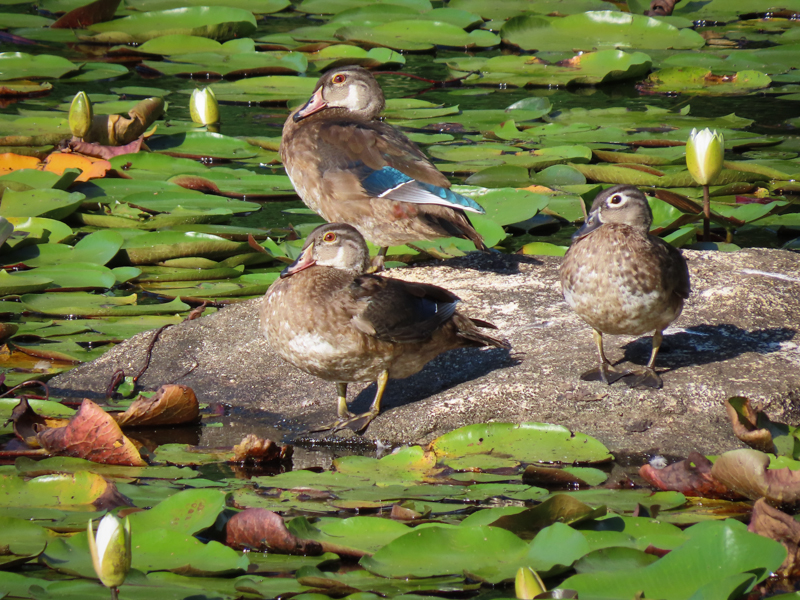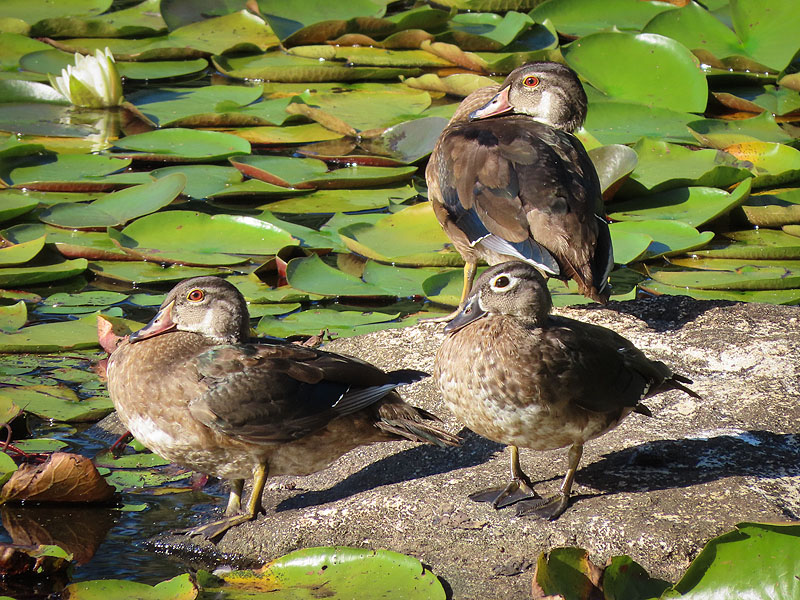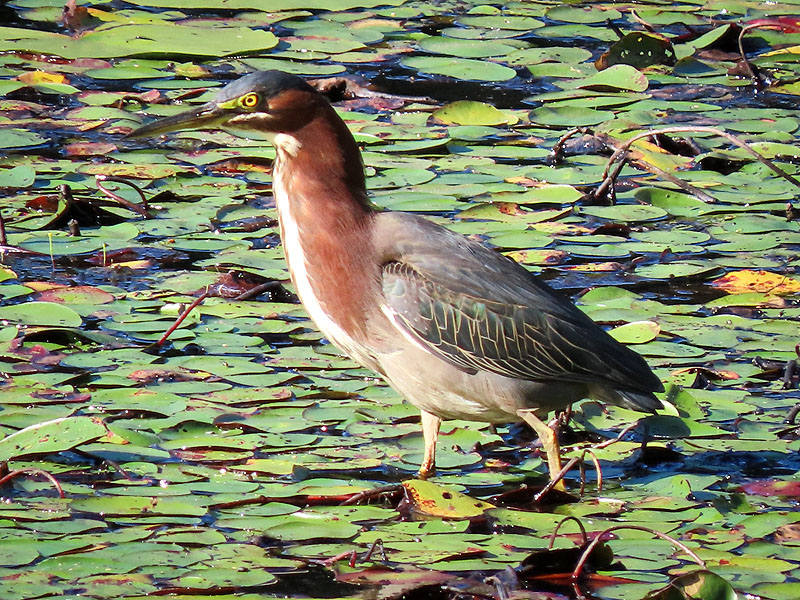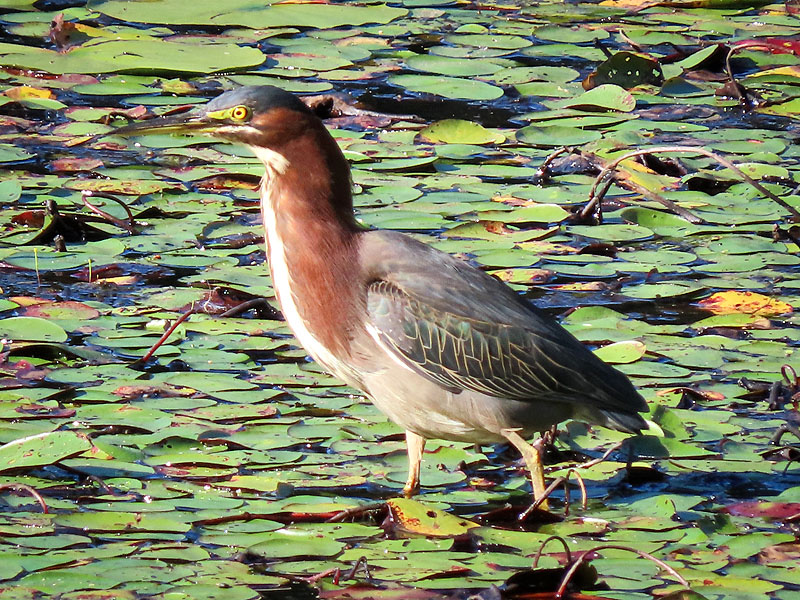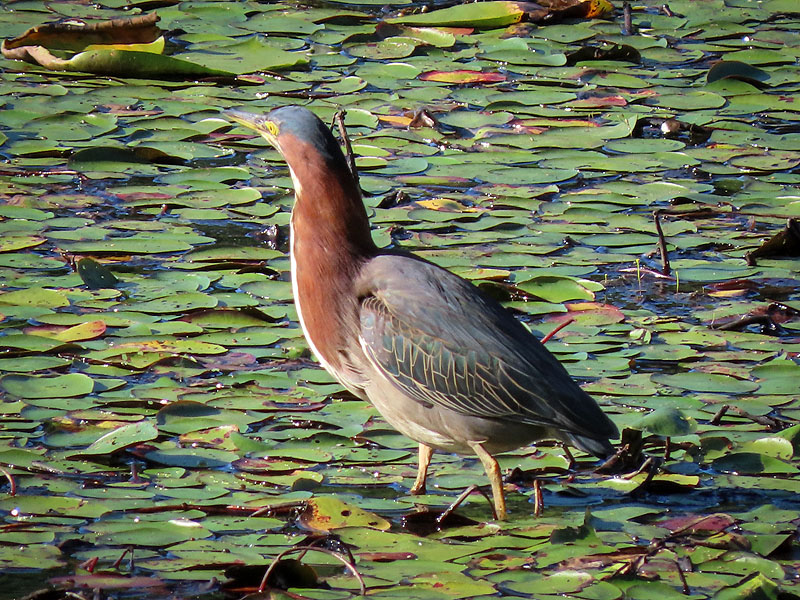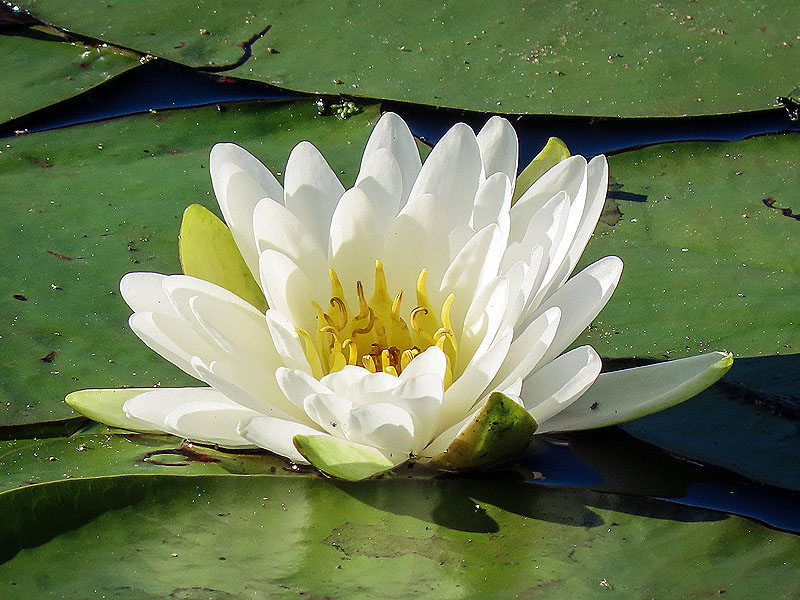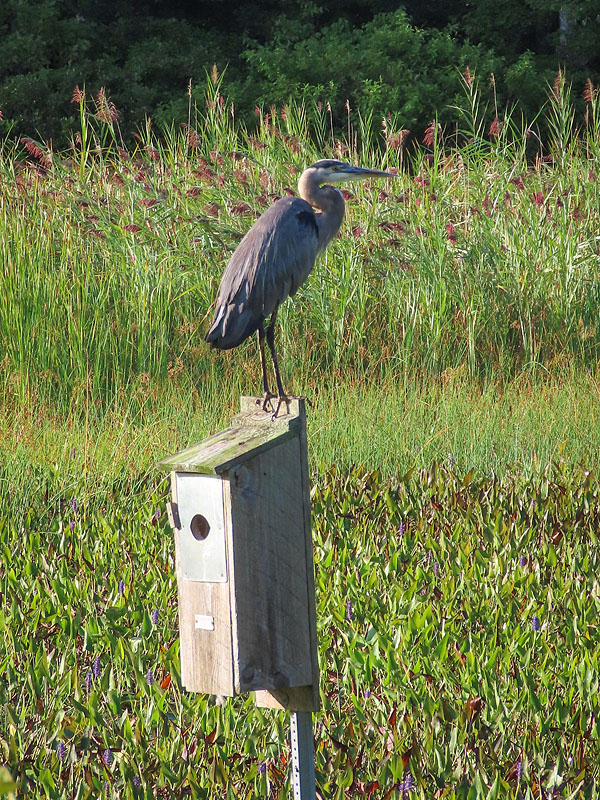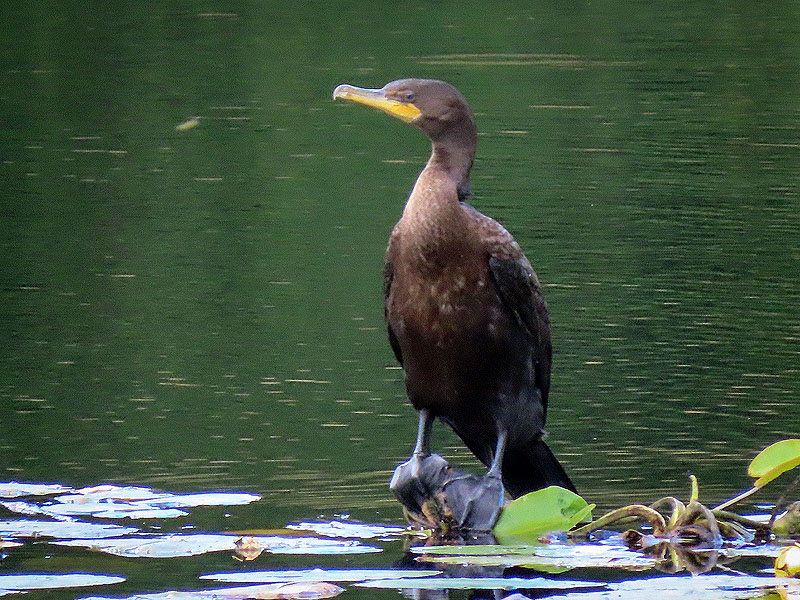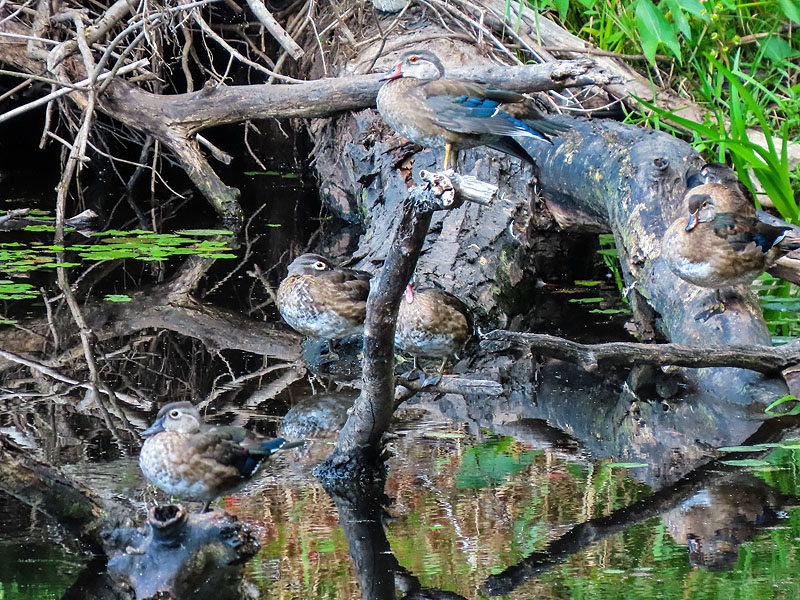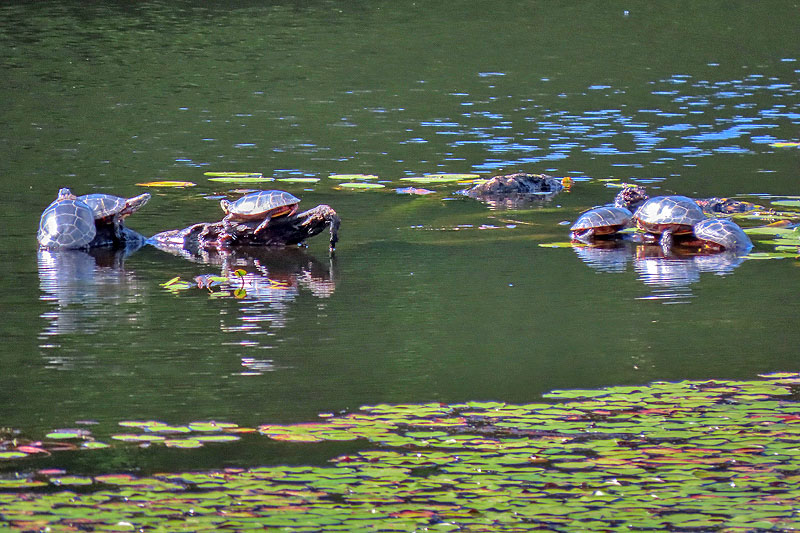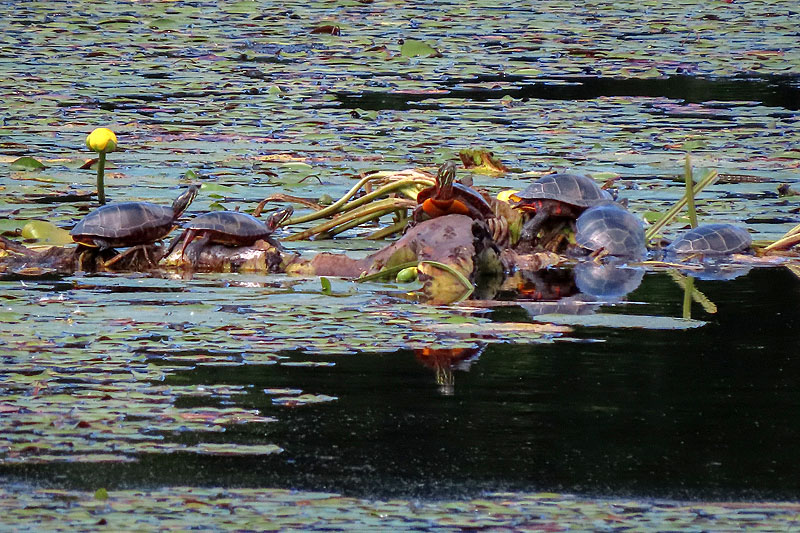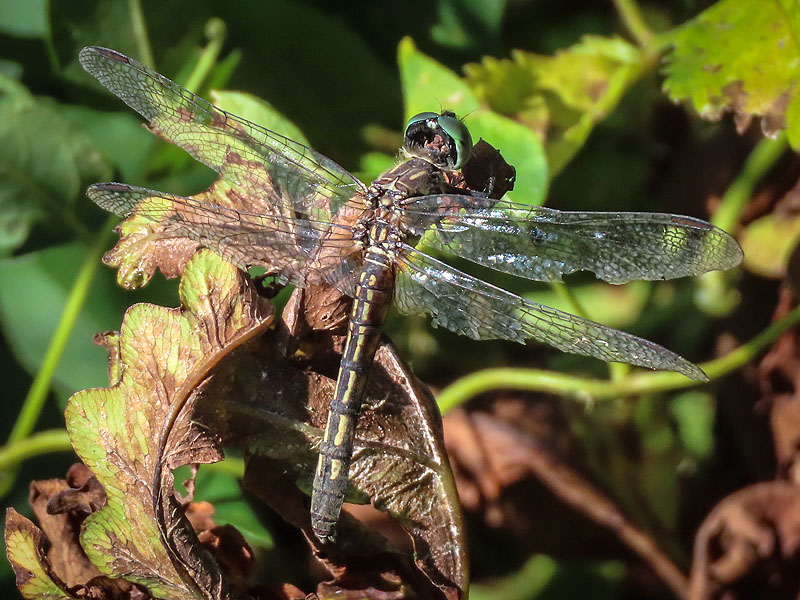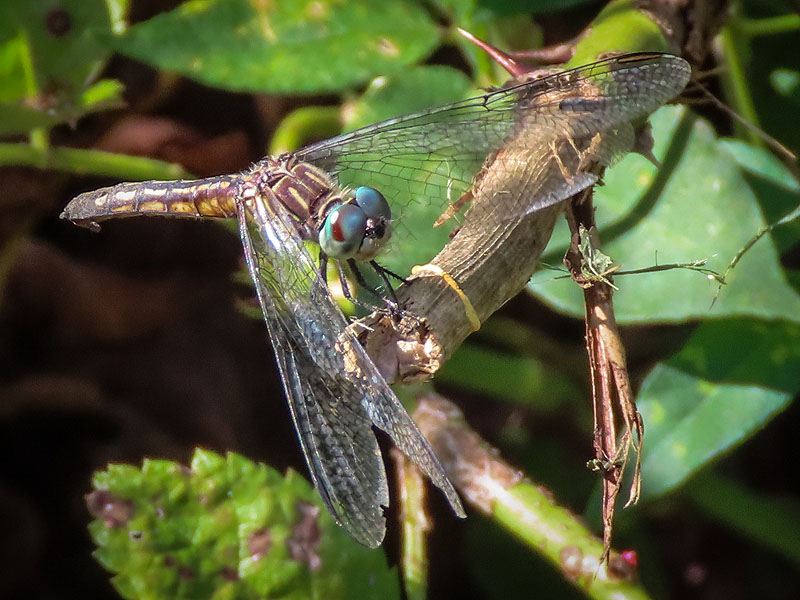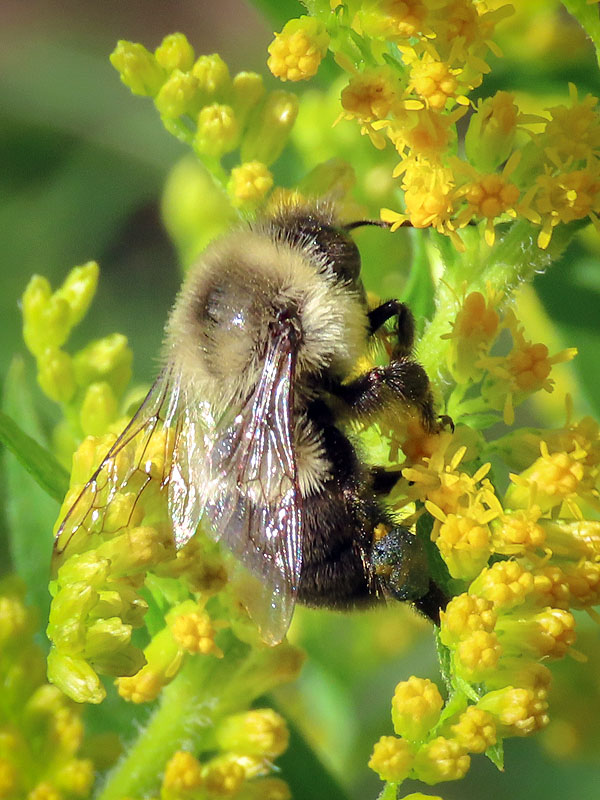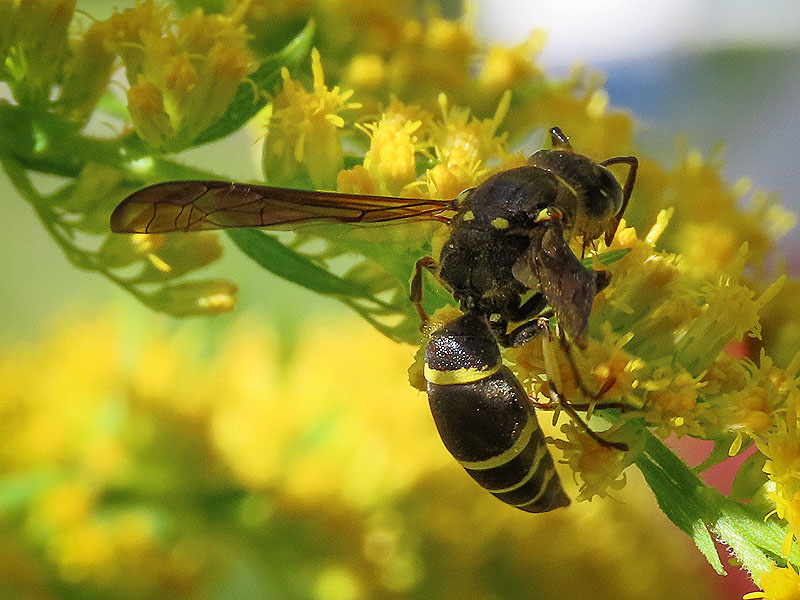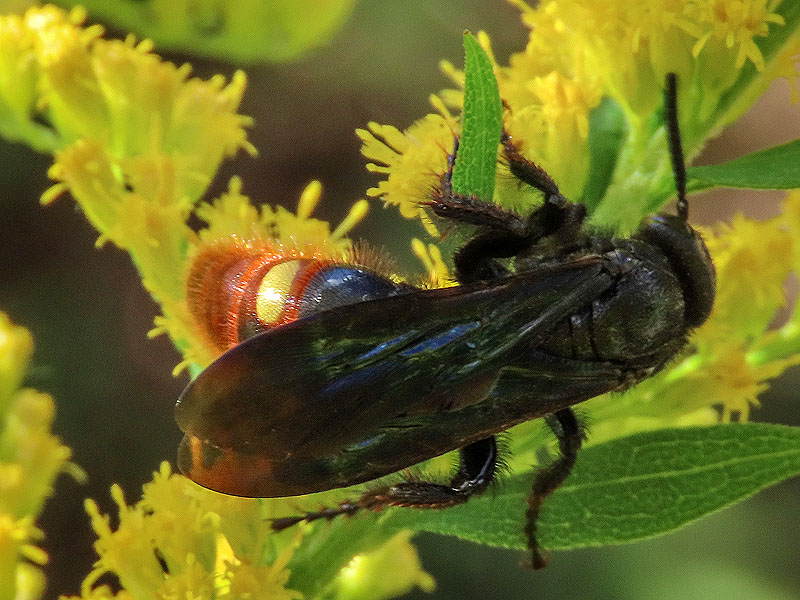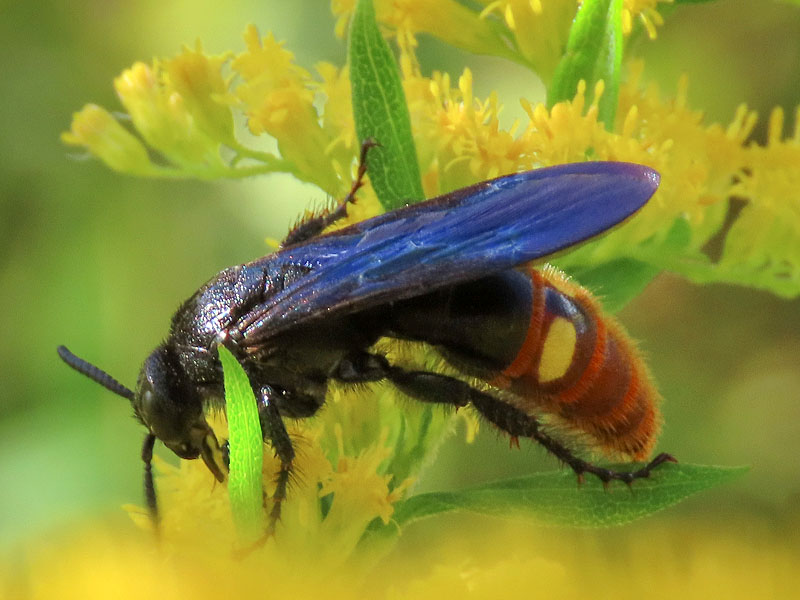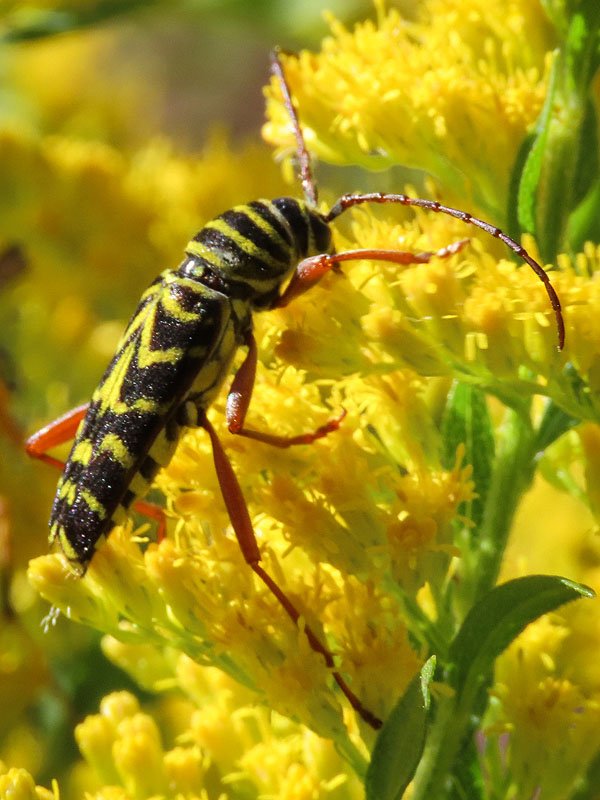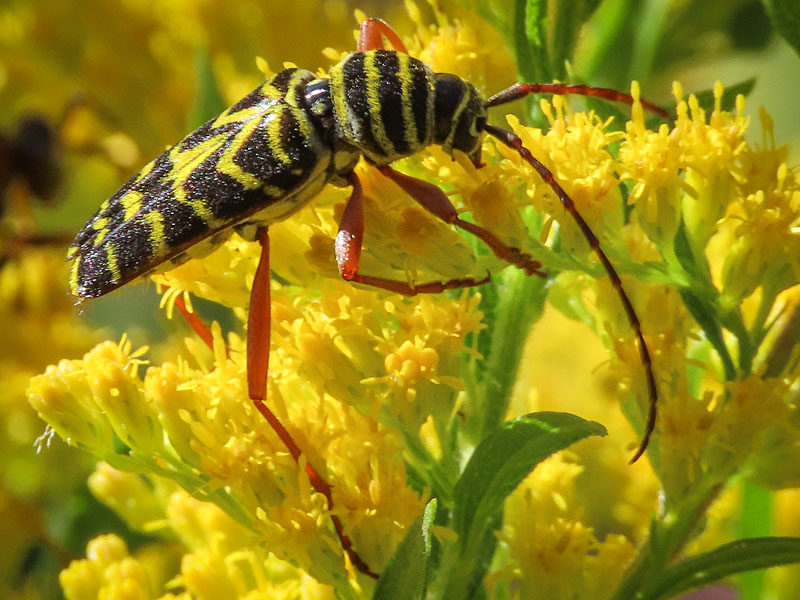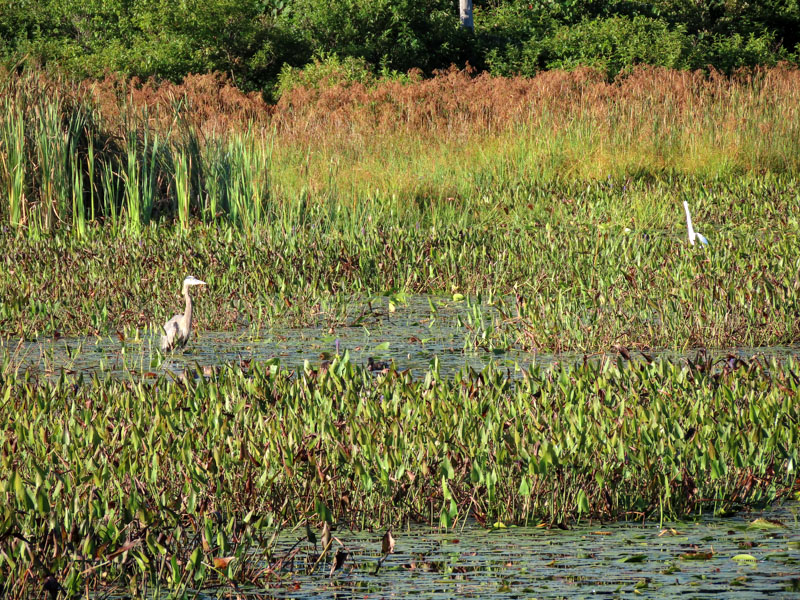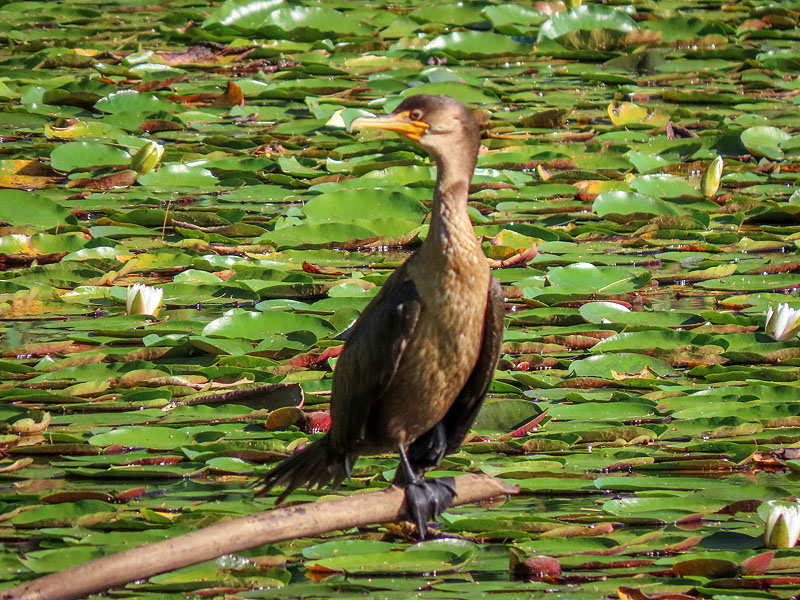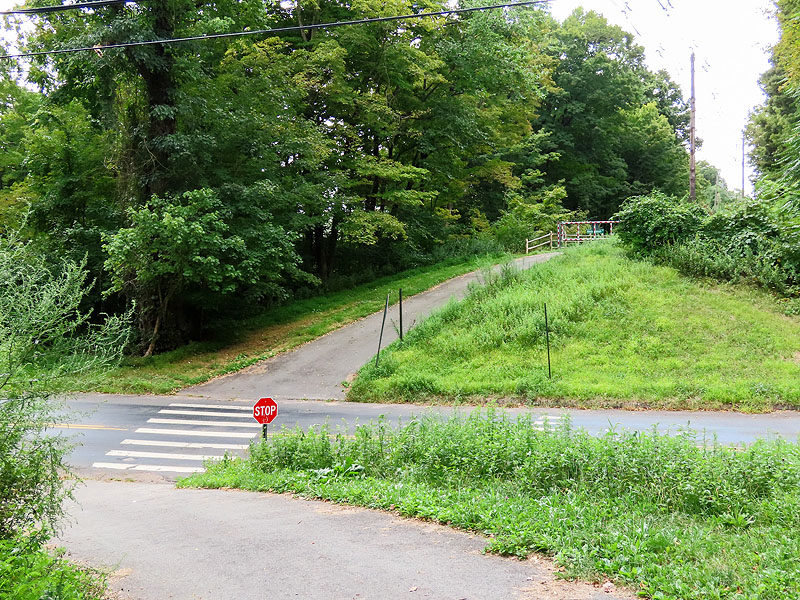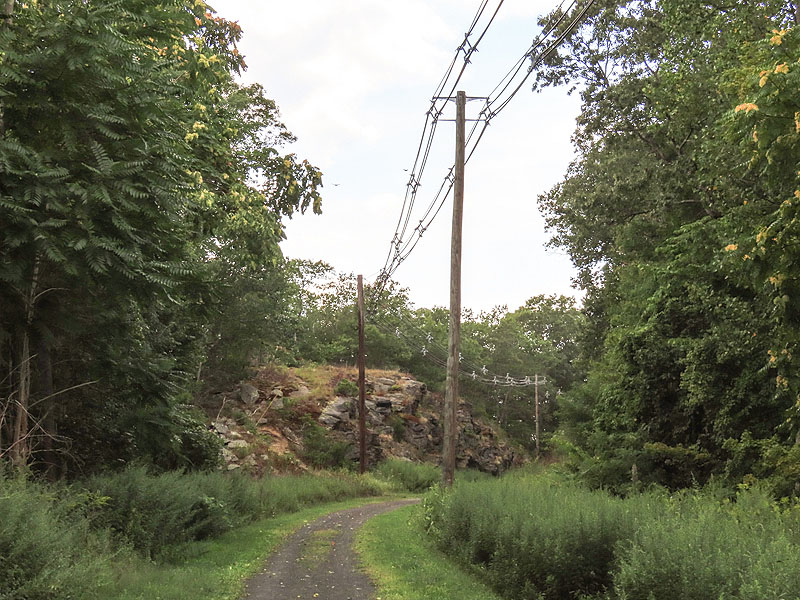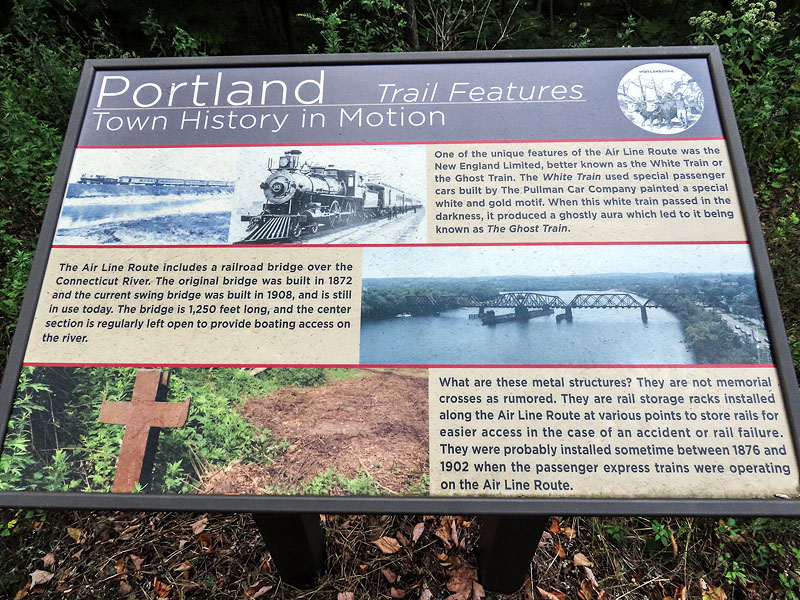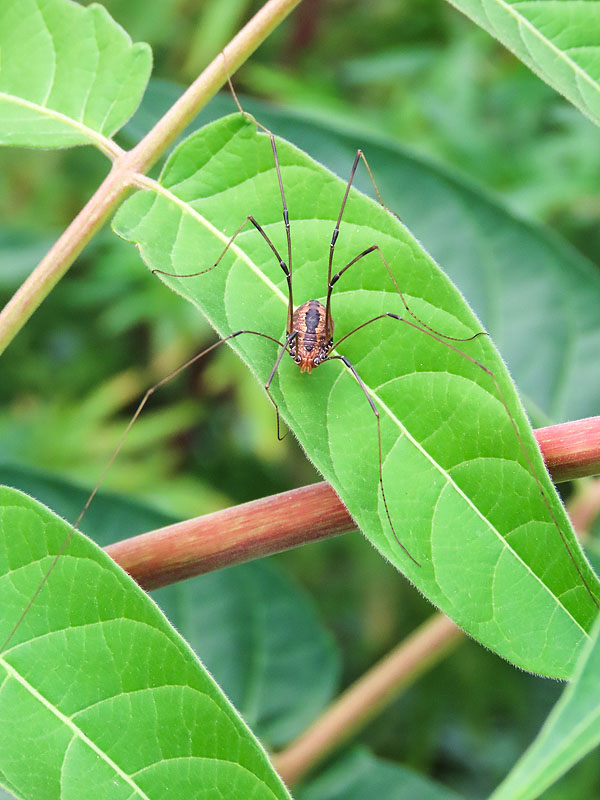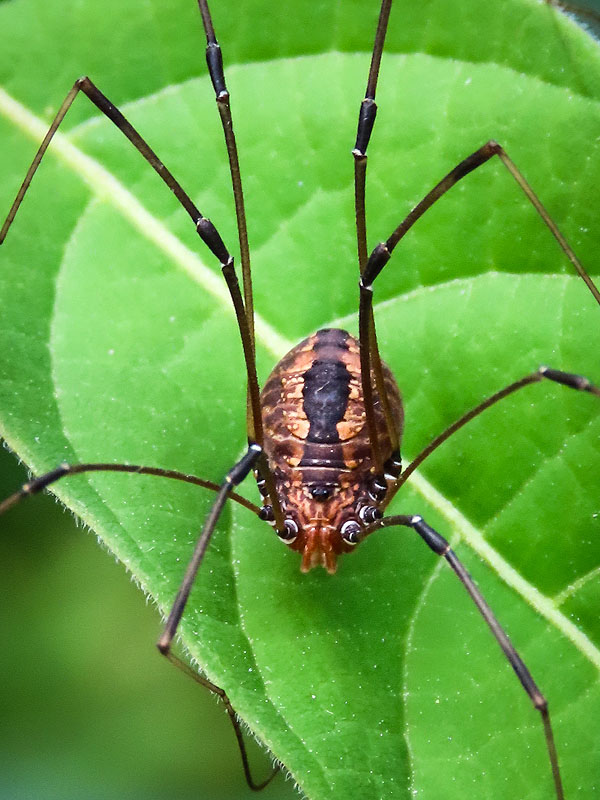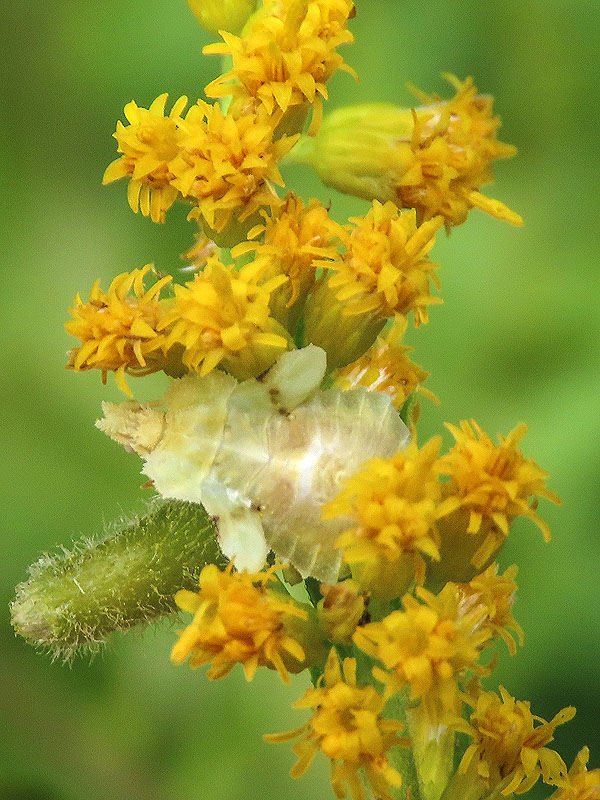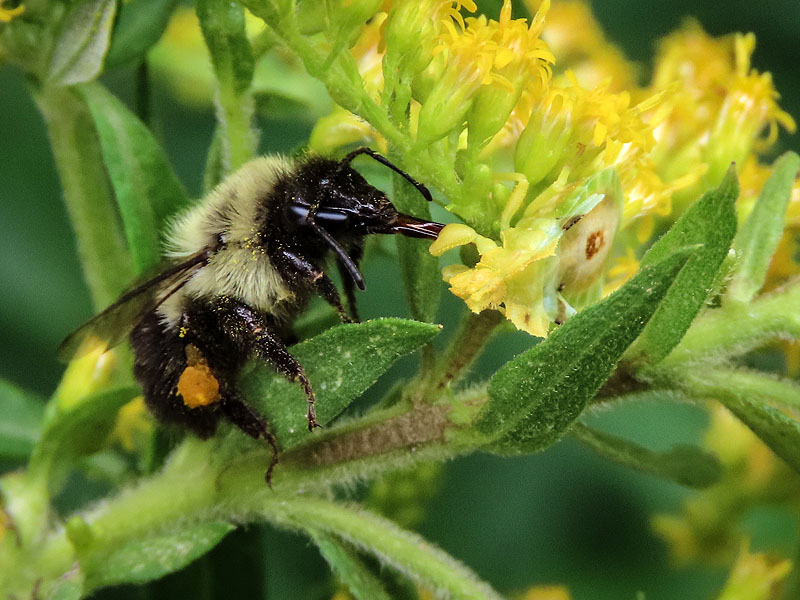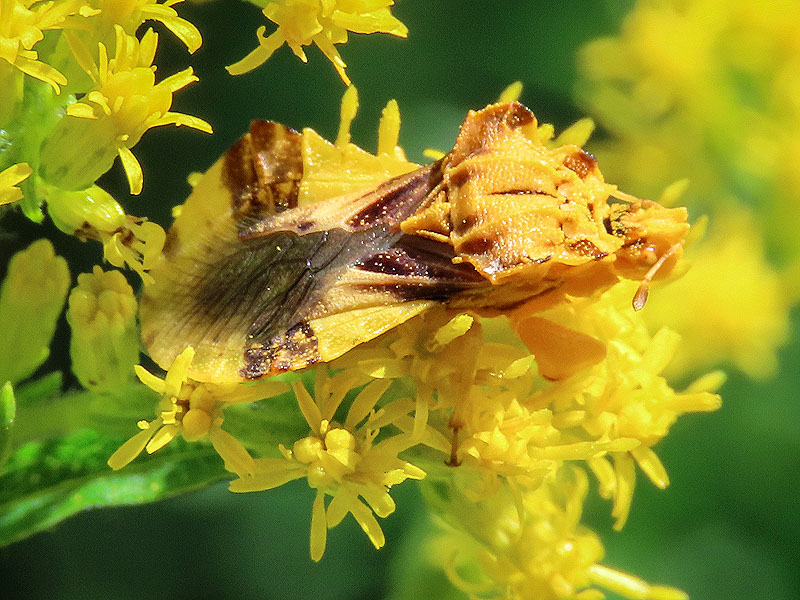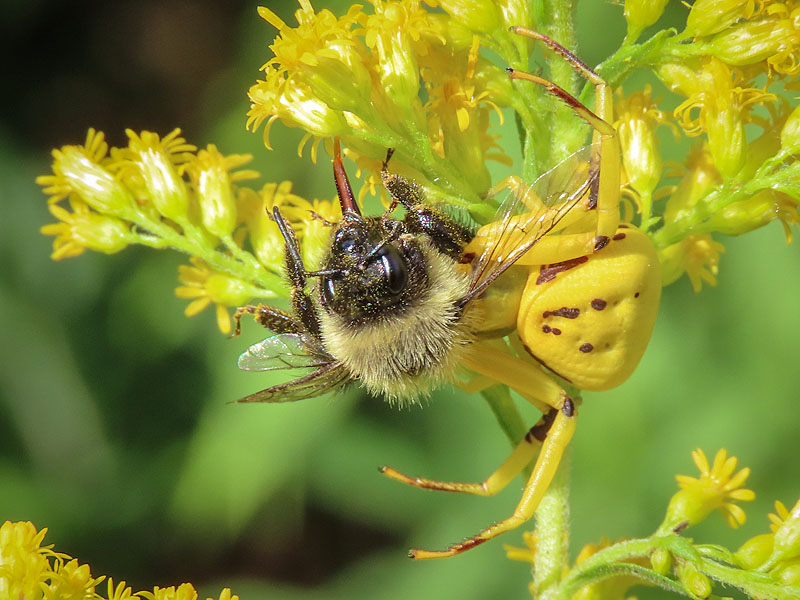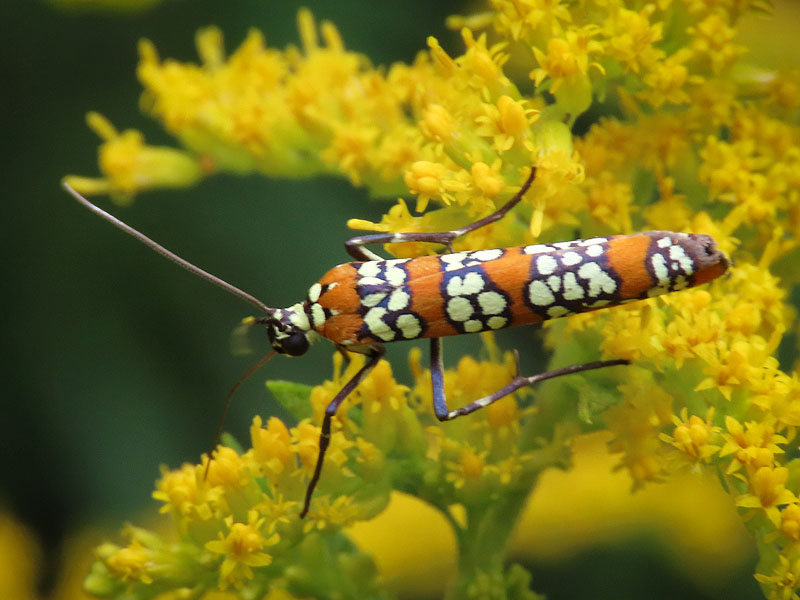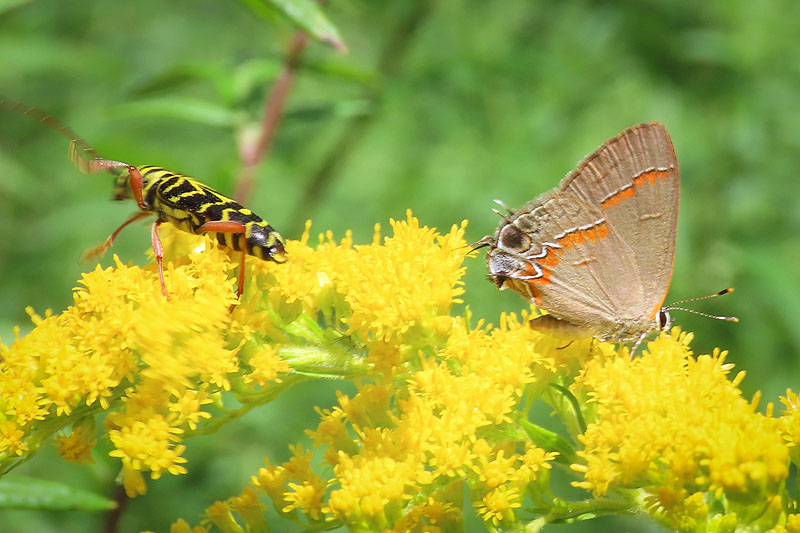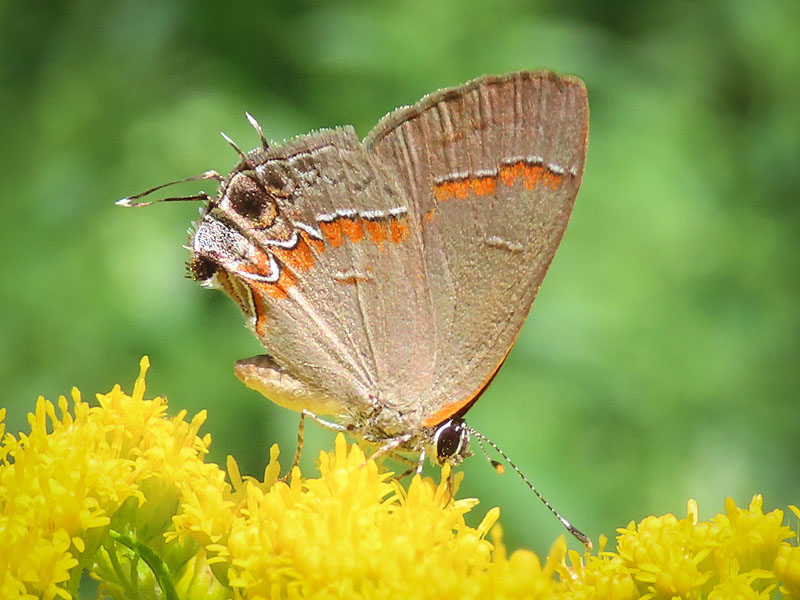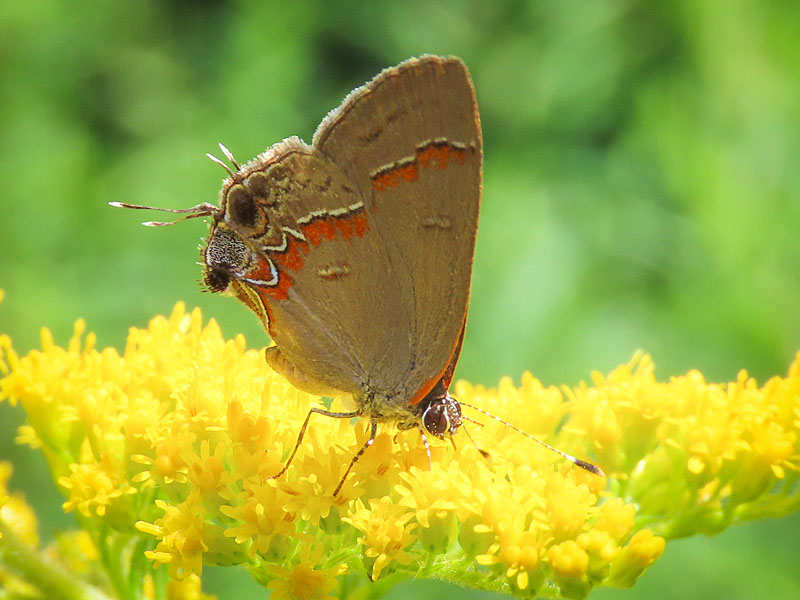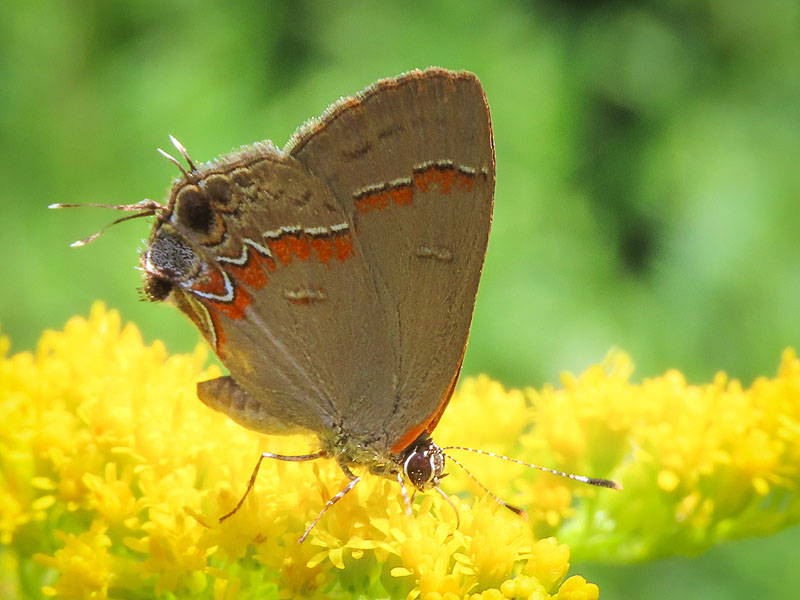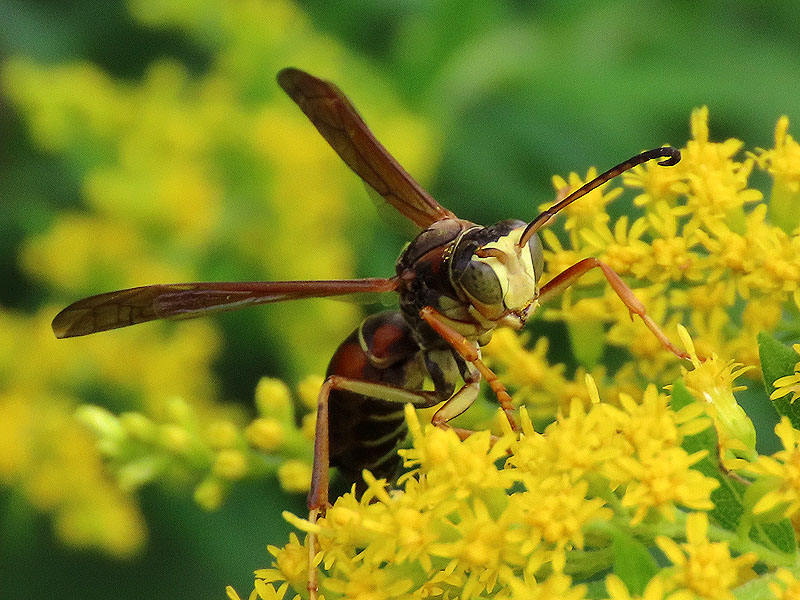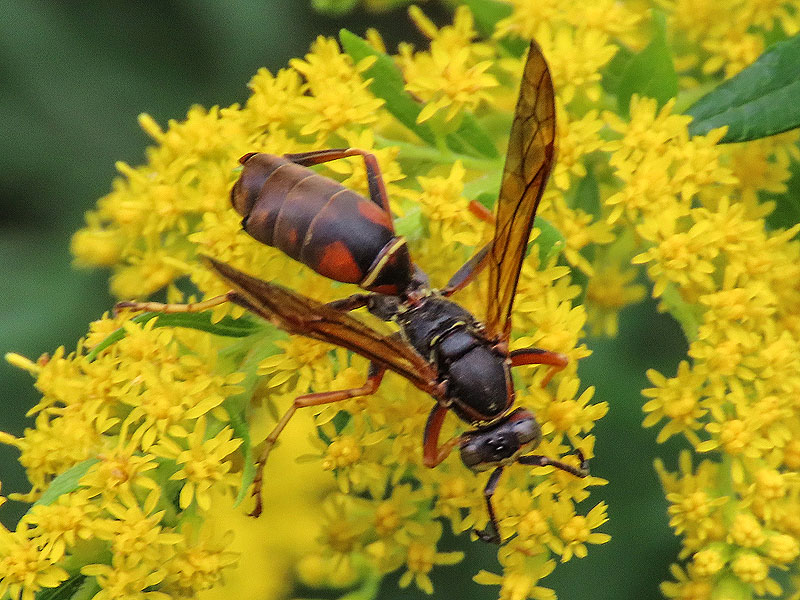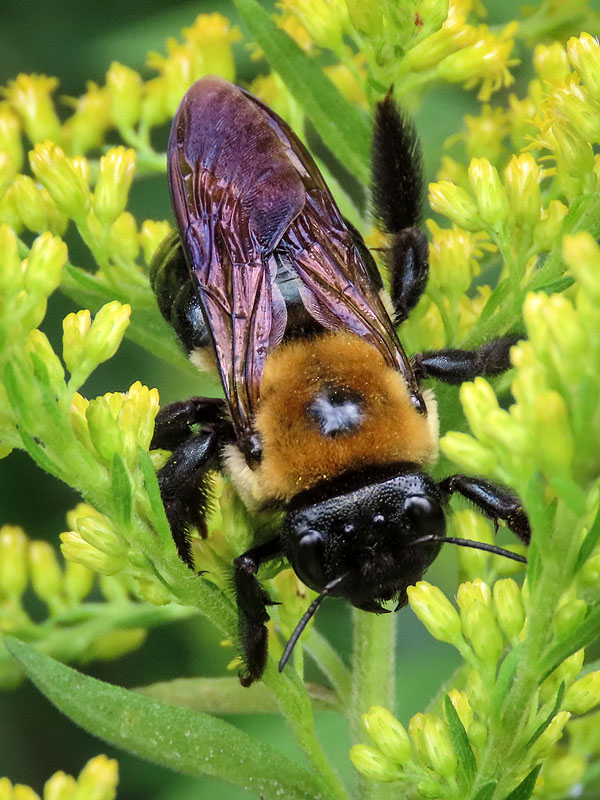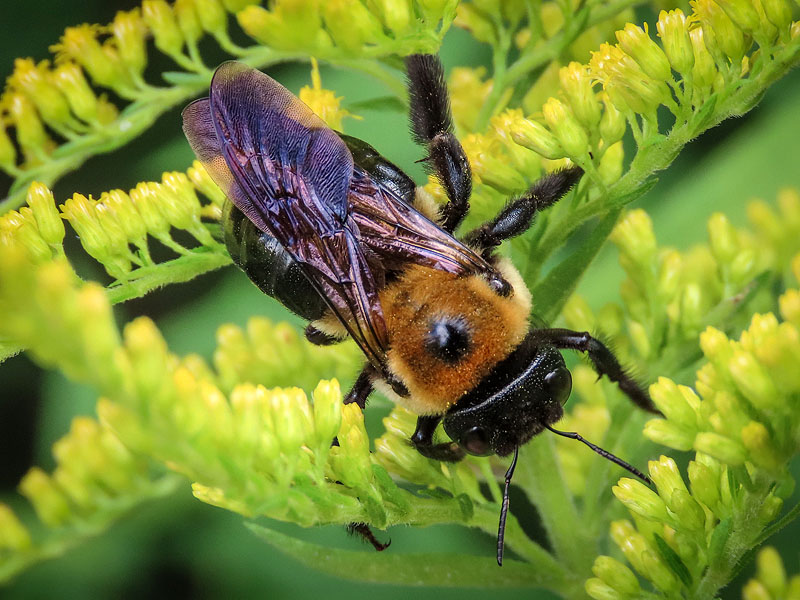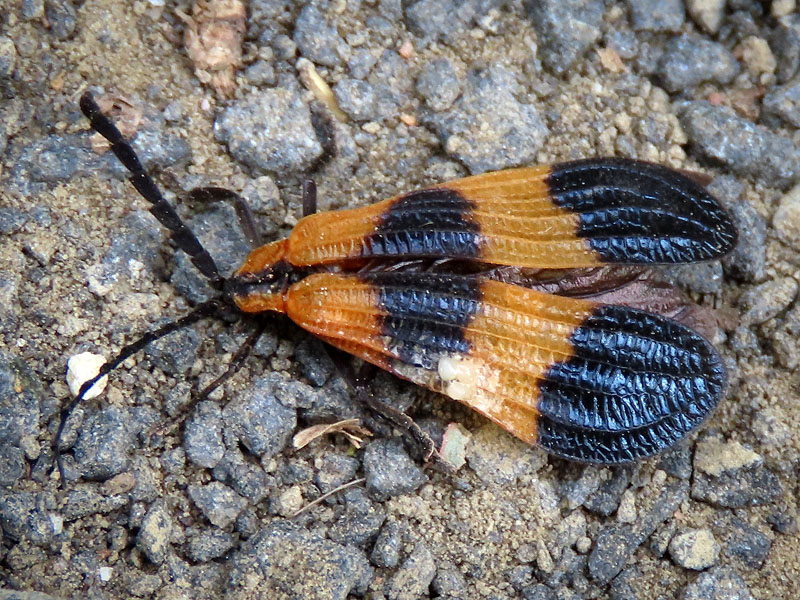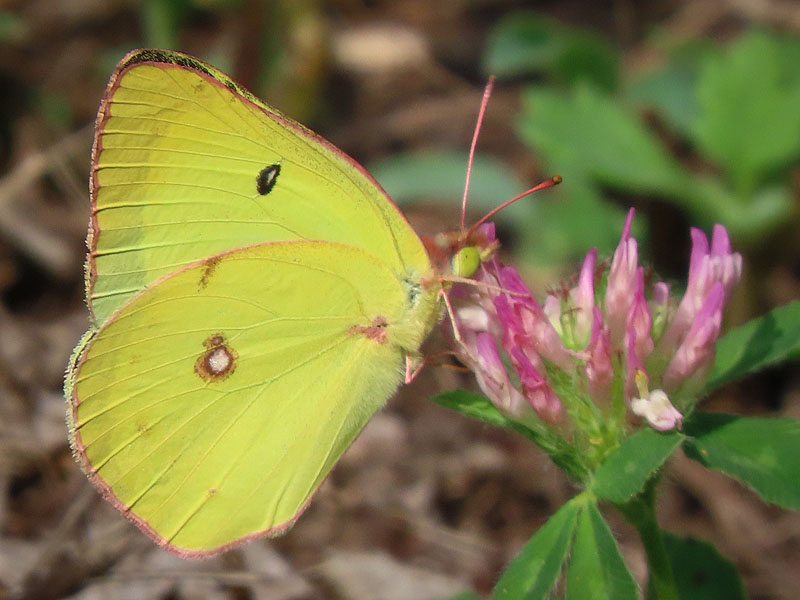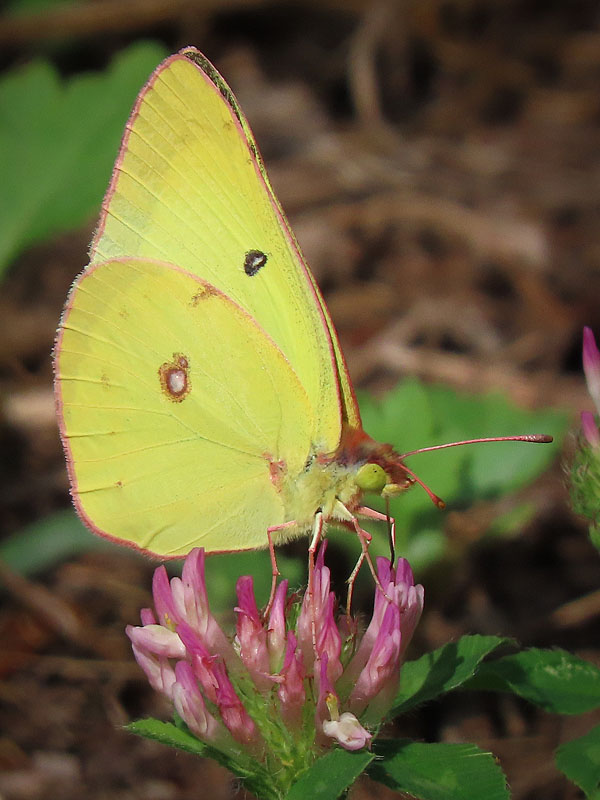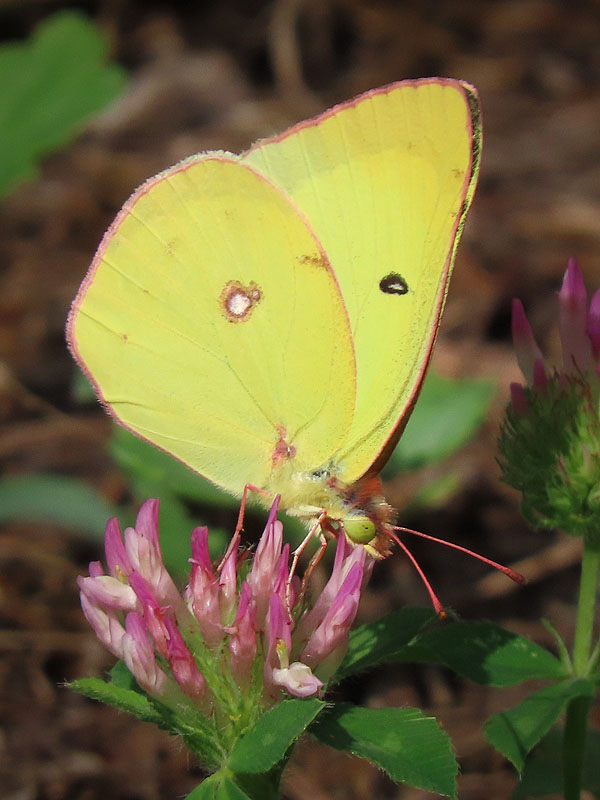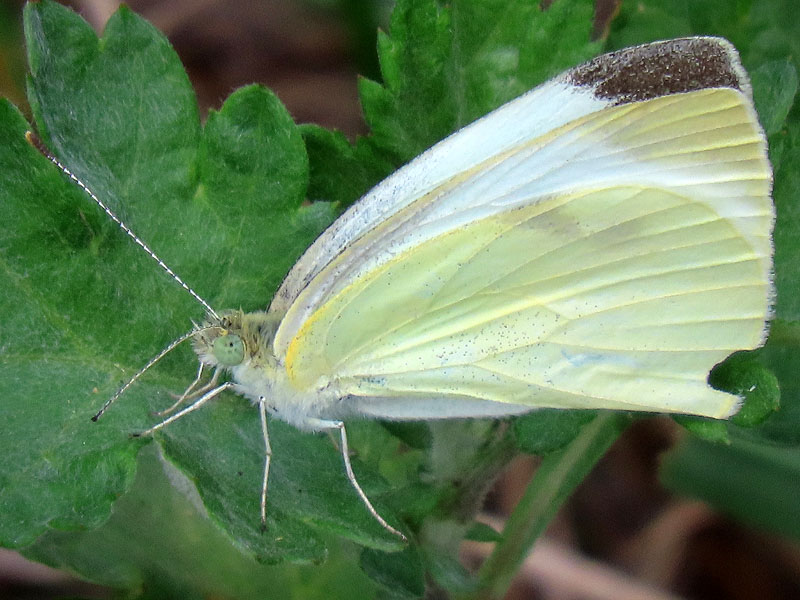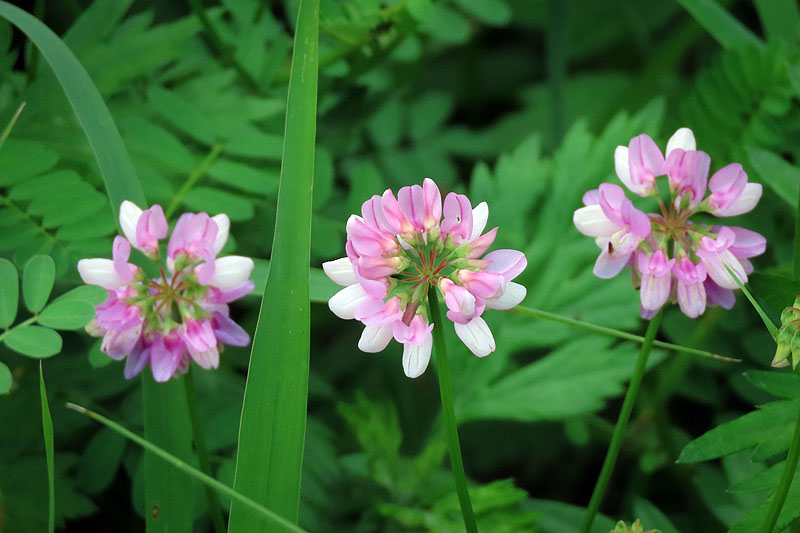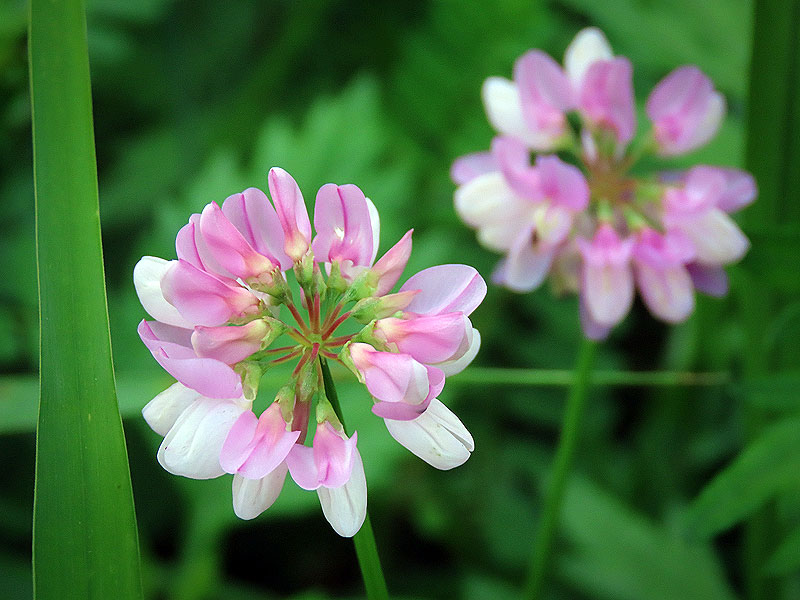Along the Air Line... 2025 - Summer, Part 18 The Air Line Trail in Eastern Connecticut - Stan Malcolm Photos |
HOME: Air Line... 2025 Pages Menu Stan's FlickR Albums |
August 26th. At Cranberry Bog in late afternoon, a Locust Borer (Megacyllene robiniae) on Goldenrod (Solidago sp.). |
Some years ago, I put together a FlickR Album of Bees, Wasps, and their mimics: https://www.flickr.com/photos/stanmalcolm/albums/72157688338793725/ |
\
Northern Paper Wasp (Polistes fuscatus). |
At the pond east of River Road, a Painted Turtle (Chrysemys picta) and a Double-crested Cormorant (Phalacrocorax auritus). |
Another Painted Turtle. |
Three young Wood Ducks (Aix sponsa) - two red-eyed males and a female. |
|
Green Heron (Butorides virescens). |
|
|
Fragrant Water-lily (Nymphaea odorata). |
August 27th. Great Blue Heron (Ardea herodius) atop the south side Wood Duck box at Raymond Brook Marsh. |
Just one Double-crested Cormorant (Phalacrocorax auritus) at the pond east of River Road. |
Look closely. There are 6 Wood Ducks (Aix sponsa) in this photo. |
Six Painted Turtles (Chrysemys picta)... |
...and six more nearby. |
Next stop Cranberry Bog. An ancient Blue Dasher dragonfly (Pachydiplax longipennis). Wings tattered. |
Another one nearby. |
I wonder where this Bumble Bee (Family Bombidae) got the dark colored pollen. |
A Mason Wasp (Ancistrocerus sp.). |
Digger Wasp (Scolia dubia). |
|
Another Locust Borer (Megacyllene robiniae) on Goldenrod (Solidago sp.)... |
...or perhaps the same beetle as yesterday. (There only seemed to be one around on both days.) |
Sweet Peas (Lathyrus odoratus) continue to bloom. |
August 28th. Great Blue Heron (Ardea herodius), Great Egret (Ardea alba) and several Mallards (Anas platyrhynchos). Lousy picture. Sorry. |
One of the Cormorants at the pond east of River Road. The other one there too, plus Wood Ducks in the distance. |
In mid-afternoon, I took a long walk west from Depot Hill Road in Cobalt - well into Portland. This is the Middle Haddam Road crossing. |
Rock cut along the way. Most of the vegetation is invasive Mugwort. Thankfully some Goldenrod too. |
|
Now for the "wildlife"! A Daddy Longlegs (Opiliones sp.). |
Fun facts about Harvestmen (the generic term for Opiliones): https://www.dnr.state.mn.us/mcvmagazine/issues/2024/jul-aug/profile.html |
The ubiquitous Multicolored Asian Lady Beetle (Harmonia axyridis). About the only Lady Beetle we see lately. I'll spare you the story of why. |
A nymphal Jagged Ambush Bug (Phymata pennsylvanica), pale and with only wing buds. |
Another nymphal Ambush Bug has grabbed a Bumble Bee by the tongue. |
Here's an adult; head at the right. |
This Goldenrod Crab Spider (Misumena vatia) captured a large Bumble Bee. |
Ailanthus Webworm moth (Atteva aurea). |
A Locust Borer (Megacyllene robiniae) at the left, but the star of the show is the Red-banded Hairstreak (Calycopis cecrops) at the right. |
They were considered rare in the 2007 Connecticut Butterfly Atlas and only possibly "resident", but I've seen them several times this year. |
With the body tilted forward and the hindwings tilted up, the false eyes and antennae are thought to divert bird attacks away from the vital body. |
|
A male Northern Paper Wasp (Polistes fuscatus). Males have a yellow face and curled antennae. |
The abdomen is distorted by the presence of several Stylopid female ectoparasites. Their life histor is bizarre. Read about them here: https://en.wikipedia.org/wiki/Stylopidae |
A large Carpenter Bee (Xylocopa virginica). Thankfully, they're pretty docile. |
|
Banded Net-wing Beetle (Calopteron reticulatum). |
Pokeweed (Phytolacca americana) fruits are ripe. |
Orange Sulphur (Colias eurytheme). |
|
v
|
|
|
Cabbage White (Pieris rapae). |
Crown-vetch (Securigera varia). |
|
